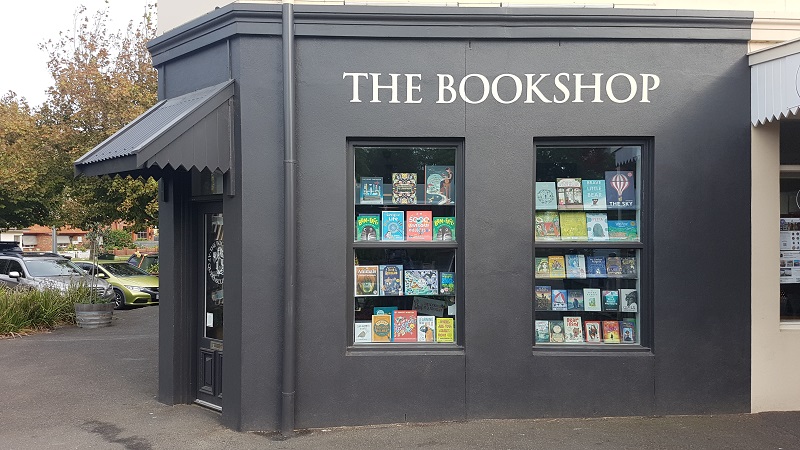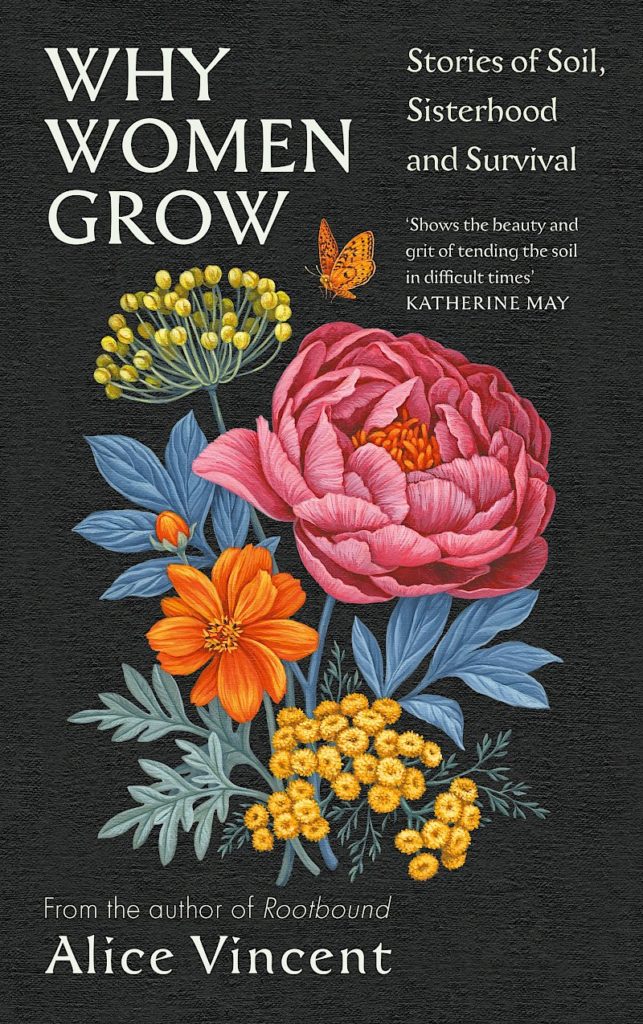 In the early 2000’s, we used to holiday at a friend’s beach house in Portarlington. No visit was complete without a trip across to Queenscliff for (a) fish and chips on the beach (b) ice creams and (c) a long, long browse in the bookshop. We used to take turns with our son at the playground so this last ‘must’ could happen. Barwon Books, a second-hand bookshop in Geelong, had an outpost at one of the old churches and we never went away empty handed. It closed a while ago.
In the early 2000’s, we used to holiday at a friend’s beach house in Portarlington. No visit was complete without a trip across to Queenscliff for (a) fish and chips on the beach (b) ice creams and (c) a long, long browse in the bookshop. We used to take turns with our son at the playground so this last ‘must’ could happen. Barwon Books, a second-hand bookshop in Geelong, had an outpost at one of the old churches and we never went away empty handed. It closed a while ago.
 But when I went to Queenscliff recently, I discovered a bookshop there, opposite where the old one was. The Bookshop, it’s called. New books in this one. It’s got a great selection, beautifully curated. The shop I worked in for 24 years was huge, and so the owner had the luxury of space so I think it’s quite an art to have a smallish shop, and yet pick so many delectable books across many genres. And I told the owner so. I could have come away with a great big bagful but restricted myself to two, Why Women Grow by Alice Vincent (seems to follow on from Why Women Walk) and Fabric by Victoria Finlay.
But when I went to Queenscliff recently, I discovered a bookshop there, opposite where the old one was. The Bookshop, it’s called. New books in this one. It’s got a great selection, beautifully curated. The shop I worked in for 24 years was huge, and so the owner had the luxury of space so I think it’s quite an art to have a smallish shop, and yet pick so many delectable books across many genres. And I told the owner so. I could have come away with a great big bagful but restricted myself to two, Why Women Grow by Alice Vincent (seems to follow on from Why Women Walk) and Fabric by Victoria Finlay.
 Why Women Grow: Stories of Soil, Sisterhood and Survival attracted me because of the subject matter – I have been thinking a lot about my gardening obsession lately – but if I’m honest, it was the cover. You do judge a book by its cover, and of course sometimes you are wrong. But that’s why publishers don’t do plain wrappers.
Why Women Grow: Stories of Soil, Sisterhood and Survival attracted me because of the subject matter – I have been thinking a lot about my gardening obsession lately – but if I’m honest, it was the cover. You do judge a book by its cover, and of course sometimes you are wrong. But that’s why publishers don’t do plain wrappers.
At first I thought that I’d been seduced once again by beauty. The cover! The endpapers! (You are so superficial, Susan.) I almost regretted the purchase. Maybe this was really a younger woman’s book. All that yearning, burning, churning (to quote the great Tom Lehrer) about who you are and what you want to be and is motherhood for you, or marriage…
But I continued with it and – a new thing for me. I realised very clearly that I was actually having a conversation with the book. Yes, you can have a conversation with a book!
I was already aware of Alice Vincent as a writer and journalist, and I’d read a few of her columns for the magazine Gardens Illustrated. At a particular juncture in her life – mid 30’s, partnered, new shared home, contemplating marriage and motherhood – Alice Vincent had a lot of questions about her life in general and gardening in particular. So she sent a set of questions into the world via social media. The key one was ‘what drew you to gardening?’ All sorts of women answered, 700 of them, from as near as the next London suburb and as far as Switzerland and New York. Conversations followed, and then meetings.
There was a woman in a prison horticulture program, and an older woman with an empty nest, a discarded marriage and enough money to make a paradisiacal retreat. There was a woman who can’t have children, and others with new babies or a young families. Some of them needed a space of their own, a place to create. Some of them felt that gardening was in their blood and bones, part of their heritage. There was a heroic woman in an urban council housing estate who made green, growing shared spaces for the kids to play in and families to gather in. Solace, retreat, replenishment, solitude, social and political action, self-expression, fascination, experimentation… There were as many answers to the ’why’ as there are kinds of womanhood.
When I wanted to know why women turned to the earth, I thought about some of the reasons. I thought about grief and retreat. I thought about motherhood and creativity. I also thought about the ground as a place of political change, of the inherent politics of what it is to be a woman, to be in a body that has been mothered, dismissed and fetishised for millennia. I thought about the women who see the earth as an opportunity for progress and protest.
And that’s where the sense of a conversation came in. I felt as if I could have talked to each of those women, saying ‘me, too’ or ‘this is where I’m different’, or ‘I never thought of that before, but it’s true for me as well’. I went away and wrote several pages about my garden life, my garden story. A beautiful and inspiring book, but not in the way you might think. From the gorgeous cover, you could assume it’s going to be full of pretty stories, but it’s not. The endpapers provide a clue – those massive thorns among the flowers. Making a garden for many of these women is messy, gritty work; time is often hard-won and fitted in amongst the daily tasks, the child rearing, the job, the health challenges, the lack of space and money and energy. For all the aspirational gardens in lifestyle shows and magazines, there’s also the weather, the season, the soil. Like life, it’s out of our control much of the time.
It has taken me time to realise that when I met with these women, I was seeking guidance. That I set out not knowing how to be or how to live, that I was uncomfortable with growing into a new stage of life, that I wanted permission to explain myself. I think about the stories I’ve heard and what I’ve learned from them, all the lives boiled down into cups of tea and walks around gardens. I will hold these close – I cherish them – but I know now that I have to do the work myself. It is in me, this fierce womanhood, this state of being. It is time for me to trust her.

I remember that bookshop in the old church! I think I only went there once, but it was heavenly.
I keep telling myself that I will get into gardening when I’m older… there’s still time…I love the idea of it, but not the dirt under my nails!